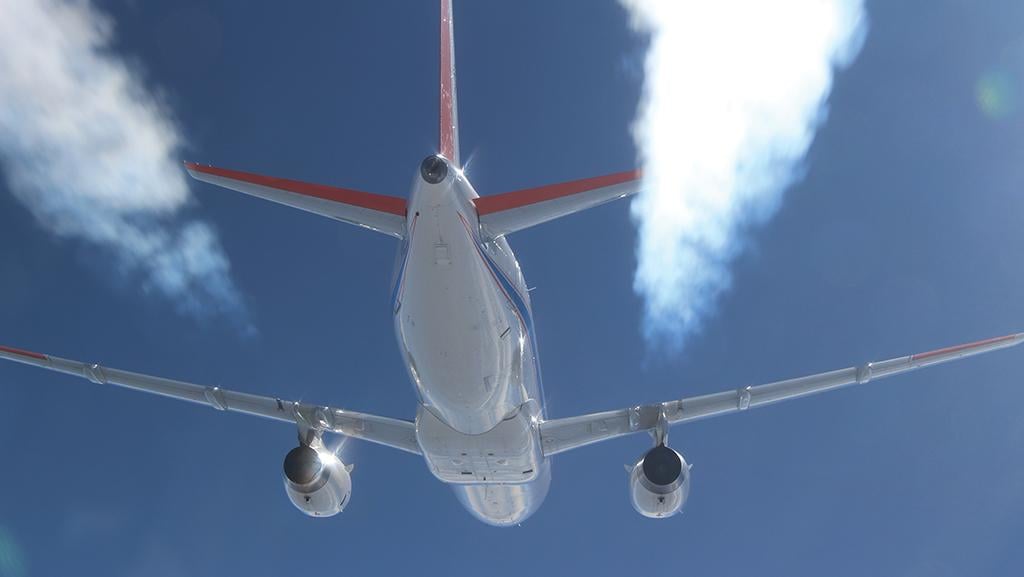Opinion: How To Establish A New Climate Of Aircraft Safety

As travelers returned to the skies this summer, two news stories raised alarming questions about aircraft pollution. The first was a report in The New York Times linking carbon-dioxide emissions to deaths from extreme heat; the second was a Reuters story on CO2 emissions from commercial aircraft as calculated by their manufacturer. Read together, they could suggest a startling conclusion: All jetliners could be grounded as unsafe to the public.
The New York Times reported on a Columbia University study in Nature Communications estimating that every additional 1 million metric tons of CO2 released into the atmosphere would cause 226 deaths by the century’s end. The Reuters piece described a Boeing sustainability report finding that each of its newest aircraft will emit 1 million metric tons of CO2 over its 20-year operational lifetime. Airbus released its own report this year showing a similar carbon footprint for its aircraft.
One way the stories’ common data point could be viewed is that the CO2 emitted by a commercial aircraft over its lifetime will eventually kill 226 people—roughly as many people as it seats. That calculus, if it survives scrutiny, should spark a reconsideration of how to account for climate damage when setting aircraft standards.
By modern standards of aviation safety, the idea that the average aircraft built would at some point kill those on board is absurd. Commercial aviation is incredibly safe for passengers, with about one fatal crash per 4 million large-aircraft flights and no fatal passenger crashes in the U.S. since 2009. But what about the rest of us?
Regulators use the term “catastrophic failure” to describe a fatal malfunction in an aircraft. Flight-critical aircraft systems must meet a “109” safety standard, which allows for one catastrophic failure for every 1 billion flight hours. A commercial airliner is typically operated for about 75,000 hr. over its lifetime.
Now let us assume that the health impact of climate change is only 1/1,000th as serious as the Columbia researcher estimates. A 0.1% chance of a catastrophic failure over 75,000 hr. equates to odds of about 1 in 100 million, or 10 times more deadly than the one-in-a-billion safety requirement. The bottom line: Under today’s safety regulations, every airliner in the world could be grounded tomorrow, even if climate change is only a small fraction as serious as the researcher argues.
This is a contentious calculation, for sure. But it suggests that it’s time to redefine aircraft safety to reflect aviation’s role in changing the climate. There is an easy way to do this. Governments enforce environmental standards for aircraft as part of airworthiness requirements; if an aircraft generates more pollution or noise than allowed by the rules, the aviation regulator deems it unfit to fly.
But to date, CO2 standards have been set to rubberstamp existing approvals of aircraft and engines rather than to drive technology forward to help avoid climate change. In 2017, the International Civil Aviation Organization (ICAO) recommended the world’s first aircraft CO2 standard. But when the Trump administration proposed adopting it in the U.S., the government’s own analysis concluded it would not actually reduce emissions.
Aviation regulators should start planning around the danger that aircraft impose on flyers and nonflyers alike through climate change. One approach is to use an updated “social cost of carbon” measure that accounts for all climate damage when setting aircraft standards. The U.S. could also repurpose ICAO’s CO2 standard as a “phaseout” to accelerate the removal of older, fuel-inefficient aircraft. This approach helped retire noisy Stage 1 and 2 aircraft and could support new markets for less-emitting designs.
The aviation industry is proud of its work to make aircraft incredibly safe for people who fly in them. It’s high time for it to do the same for people who don’t.
Dan Rutherford is aviation director at the International Council on Clean Transportation.
The views expressed are not necessarily those of Aviation Week.

Comments